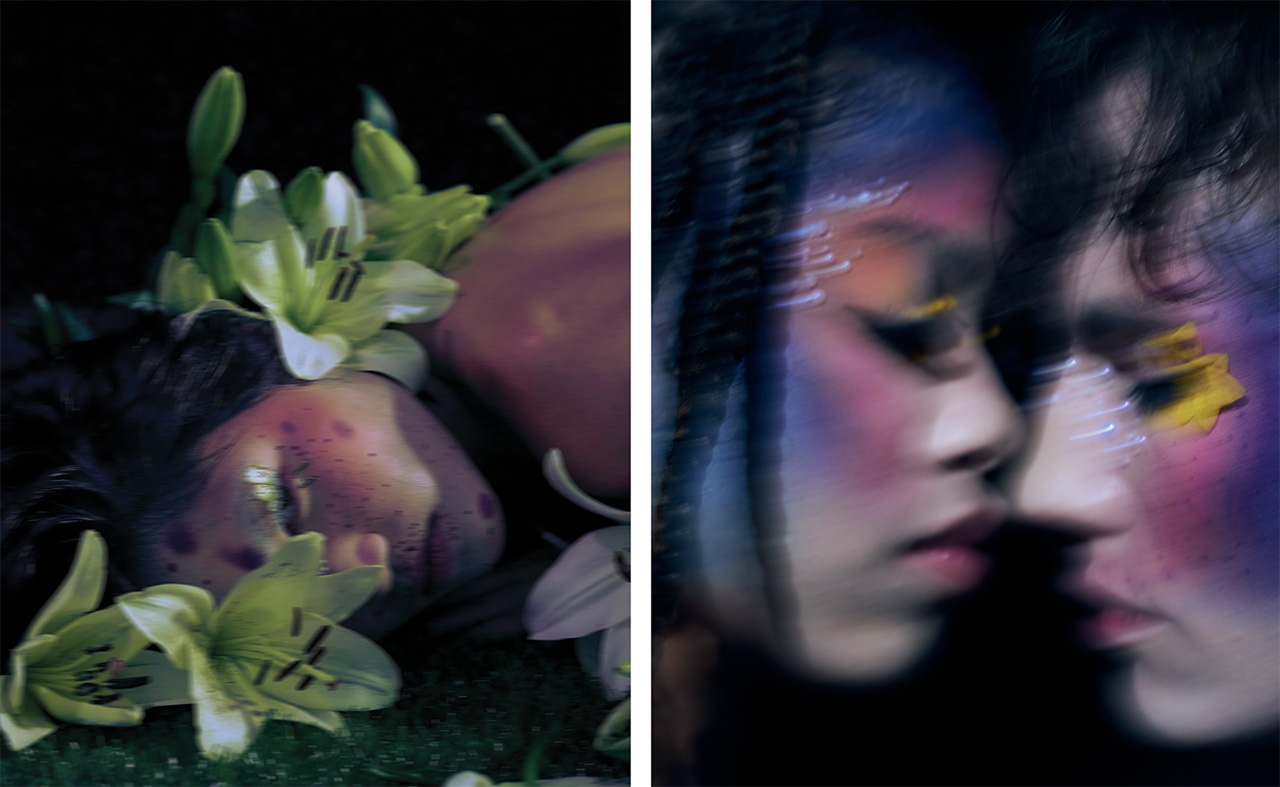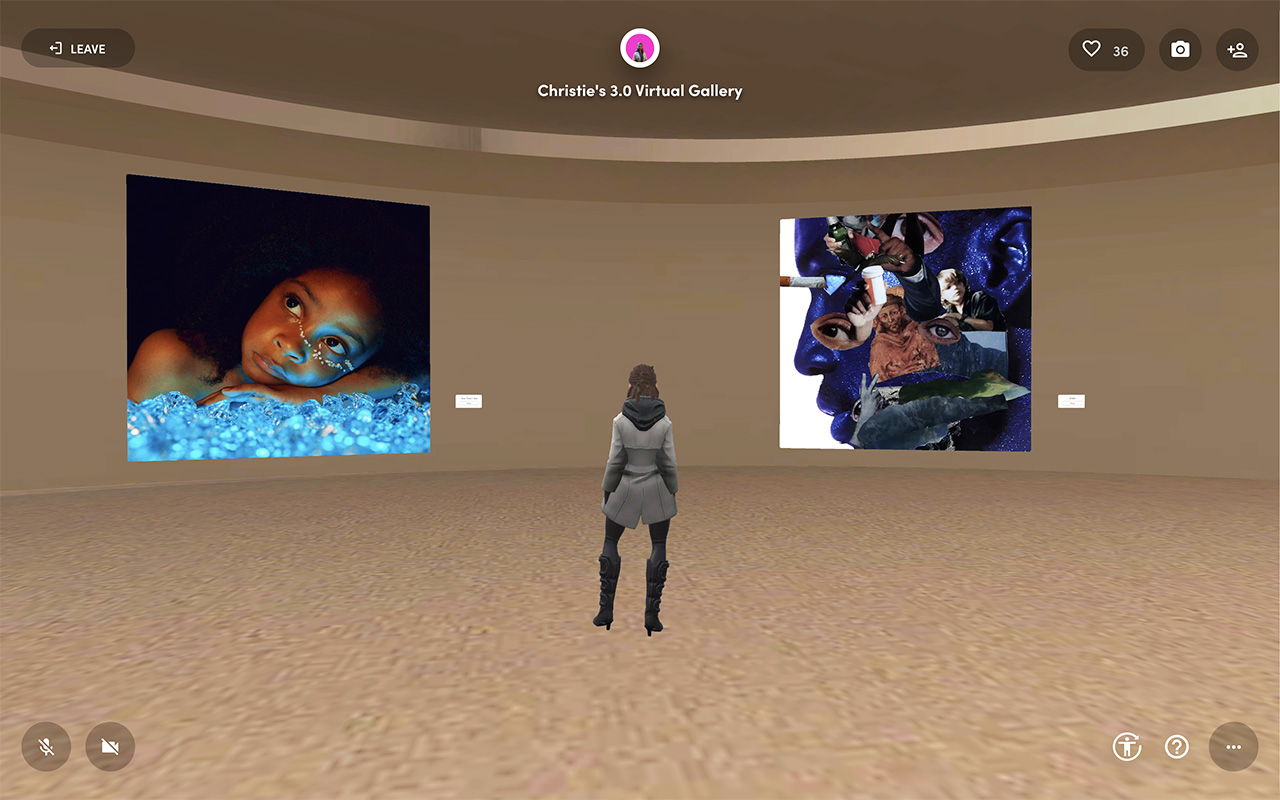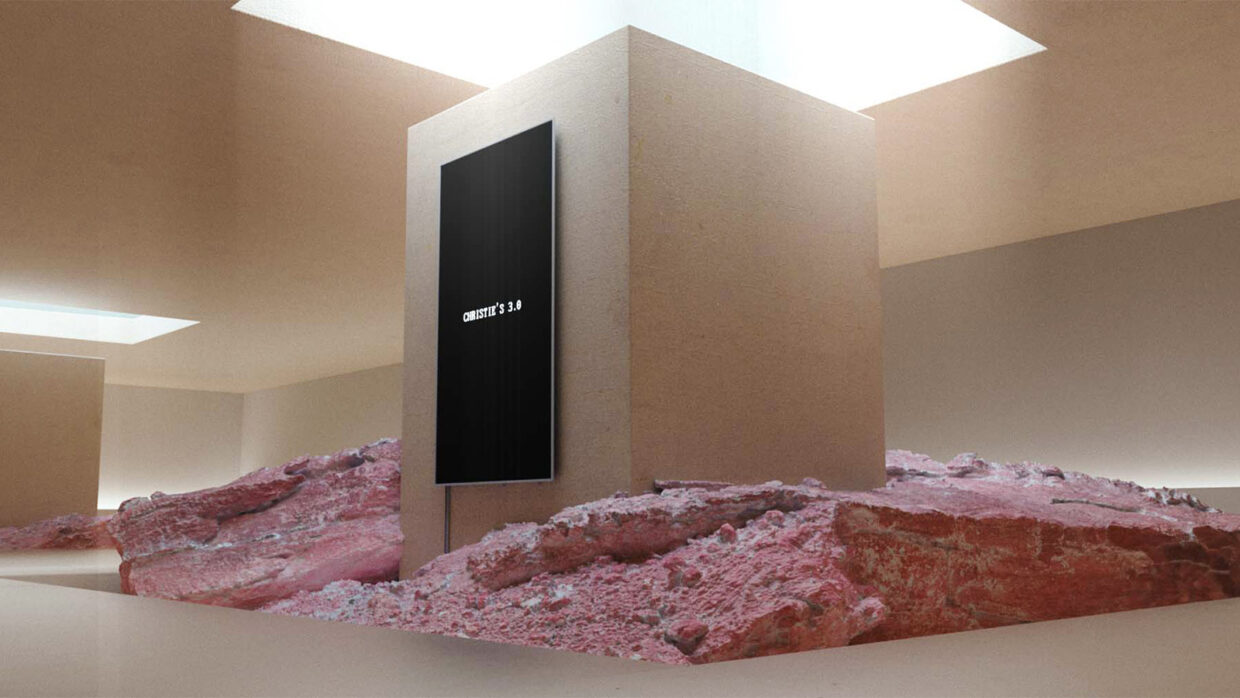Auction giant Christie’s recently revealed its NFT auction platform, Christie’s 3.0, which allows the firm to host fine art auctions entirely on the blockchain. The new platform will capture bids and payments permanently on the Ethereum blockchain, increasing transparency and opening up the world of fine digital art to more collectors.
Bidders will be able to see real-time bidding data on Etherscan, access compliance tools like AML and KYC, and even record sales tax on-chain. A virtual gallery, built on Spatial, further enables them to view the NFT art on sale in a metaversal environment and virtually mingle with other collectors.
“Christie’s clients have very high expectations, and [Christie’s 3.0] will enable a lot more traditional collectors to feel safe in collecting digital art through us,” says Nicole Sales Giles, Business Director of Digital Art Sales and NFTs at Christie’s.

The platform was launched with a sale of works by 18-year-old NFT artist Diana Sinclair. Images: Stills from I Want to Nurture the Earth (left) and River Over Stone (right) by Diana Sinclair, 2022 / Christie’s
Inaugurated with a sale of works by artist Diana Sinclair, Christie’s 3.0 feels almost inevitable. It was Christie’s, after all, that auctioned Beeple’s Everydays: The First 5000 Days for a record $69.3 million in March 2021, instantly catapulting NFTs into the mainstream. Since then, the auction house has launched Christie’s Ventures, a Web3 venture capital fund, with its first investment going to LayerZero Labs, a startup building applications that work on multiple blockchains. Its Art+Tech Summits in 2021 and 2022 have also leaned heavily into Web3.
Giles shares more below on why the time is ripe for Christie’s to launch its NFT platform, and how the auction house views the opportunities and challenges ahead.
Why launch Christie’s 3.0 now?
We’ve been building Christie’s 3.0 for quite some time, and we felt that after the Ethereum Merge, it was a good time to launch given the sustainability benefits, as traditional collectors can start to feel more secure in their purchasing and collecting. And then second, from conversations with artists and collectors, we learned that they really want to be able to transact on-chain, in the true way that NFTs are meant to be collected. We really felt that in order for Christie’s to be a major player in the NFT art market, we needed to build this platform.
How does this platform differ from other fine art NFT platforms?
We really don’t see ourselves as competitors to them. We’re bringing collectors into a place where they can browse and discover the best of the best in digital art. It’s going to be incredibly, highly curated to really help high-end collectors discover artists that they may not have otherwise known about. We really feel like digital art is just another collecting category within contemporary art, and it’s a serious category that deserves a place in every major contemporary art collection. So we see ourselves as the most curated offering on the market currently.

Built on Spatial, the Christie’s 3.0 virtual gallery enables collectors to meet, mingle, and view the NFT art on sale. Image: nft.christies.com
What kind of opportunities in crypto and NFTs do you see in the next year or two?
By launching this, our goal is to be able to scale our digital art offerings. We’re going to be able to present more emerging artists than we’ve done before, experiment more with different types of NFT and digital art offerings, and just have more frequent opportunities for collectors to learn about the best digital artists.
Are there any pitfalls or challenges that you think you might encounter?
I think the same challenge applies across all of Web3, which is onboarding new people to NFTs. But Christie’s is a 250-plus-year organization that prides itself on exceptional client service. We are here for any and all types of collectors who want to come and create a new digital wallet and learn how to do it all. And I think our UX is one of the most seamless in the industry right now, though we know that there’s a long way to go in that department [industry-wide].
How do you see the Web3 art world changing, post-winter and post-merge?
I think there’s been a maturation in the digital art market. With respect to NFTs, now there are people who are collecting and transacting digital art for the sake of art, and less who are day trading the collectibles-type NFTs. We’re not exclusively focused on the primary art market, but with this platform, we aim to promote really amazing digital artists, give them a voice on the Christie’s stage, and amplify what they’re doing to our wide-reaching audience.
Do you think there is a future where in-person auctions might fade away in favor of virtual auctions?
There’s always going to be the appeal of an in-person auction. We sell the best of the best luxury goods in every category, from handbags to wine to paintings. So there’s always going to be an appeal for the high-drama evening sale auctions for the really high-ticket prices. And at least in the near to medium future, we don’t see this replacing that in any way.



